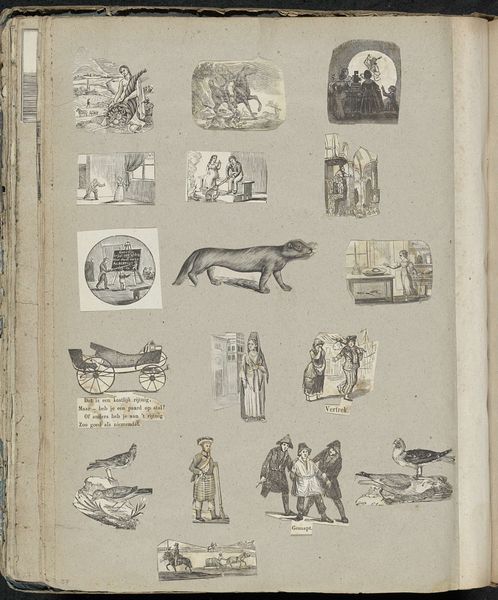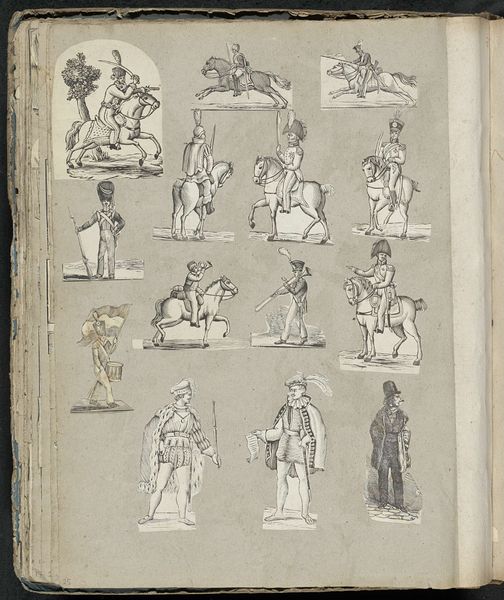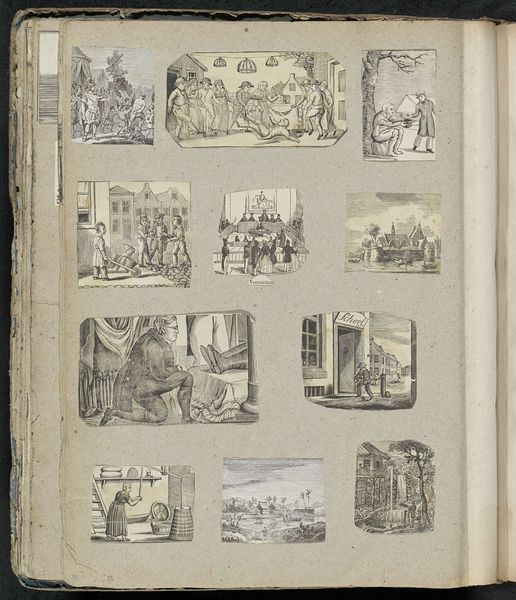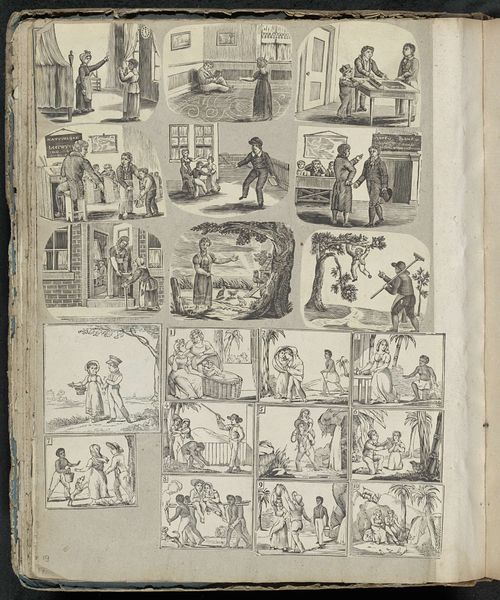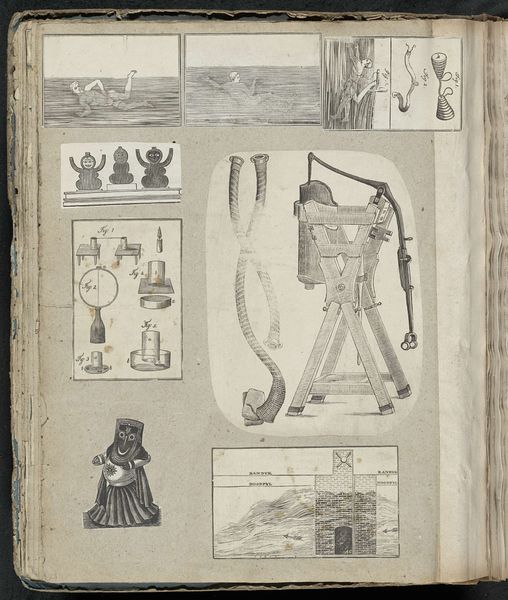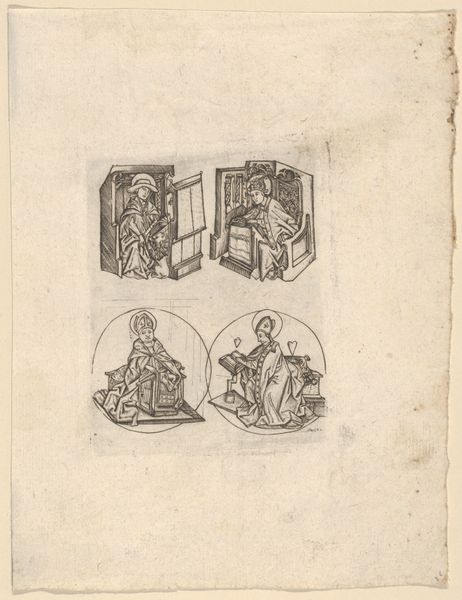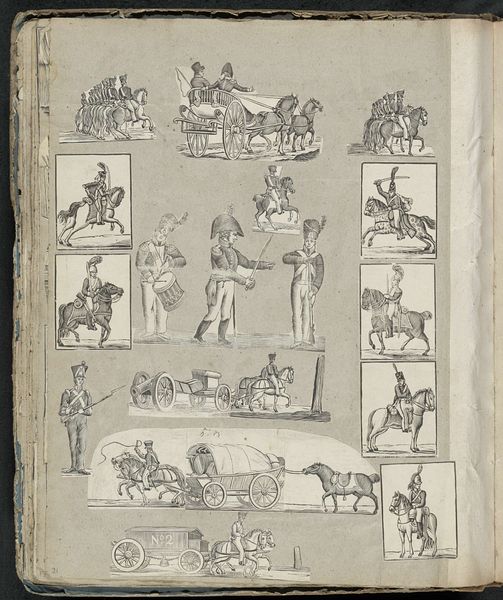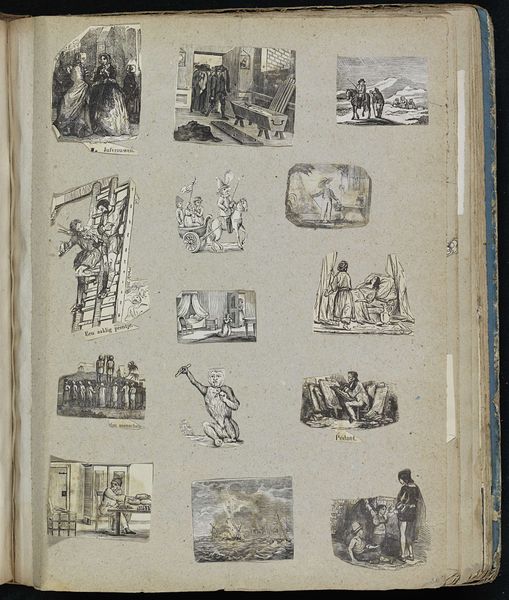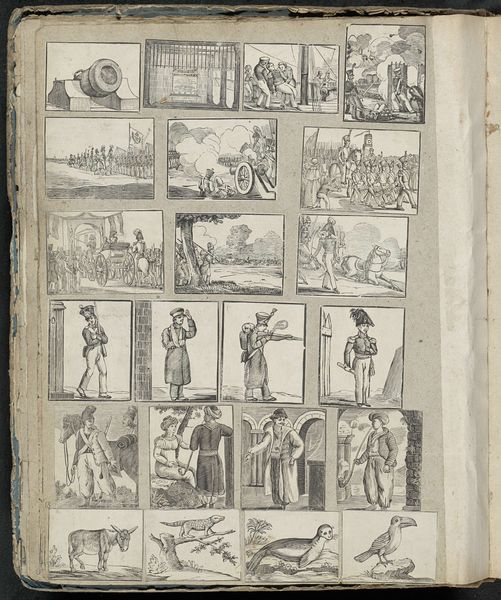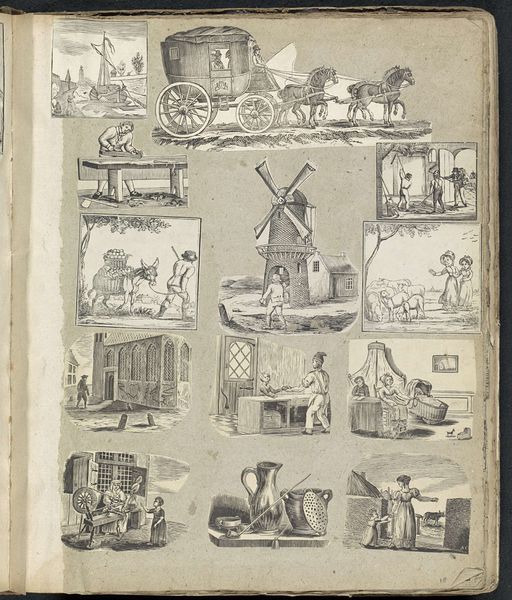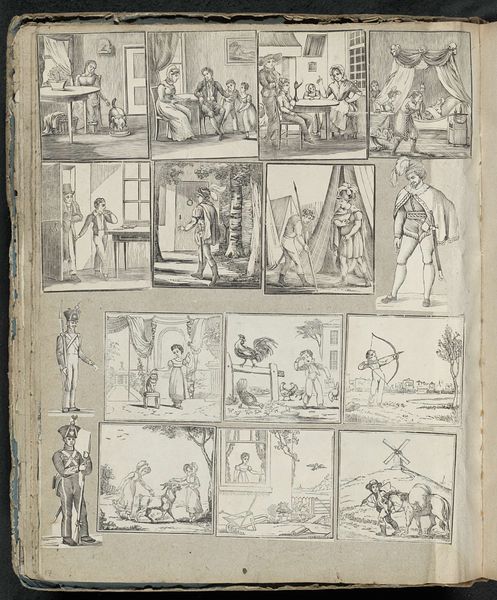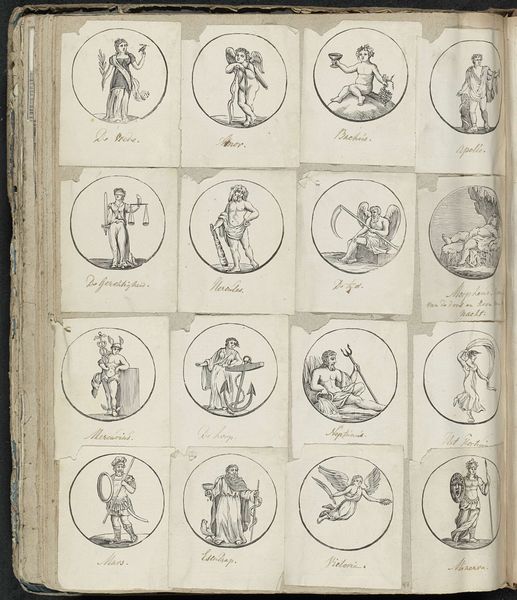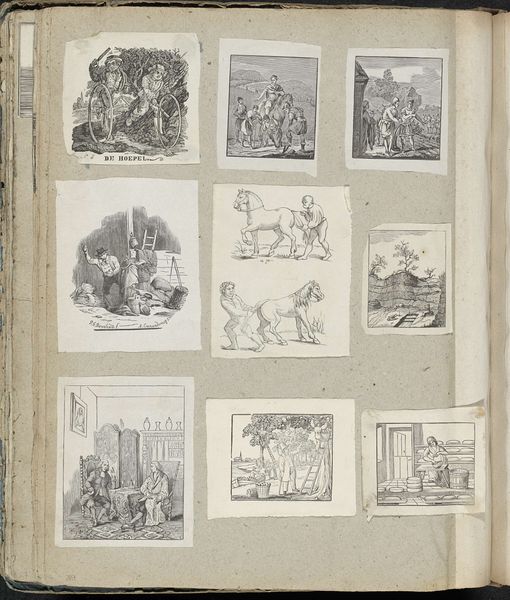
drawing, paper, pen
#
drawing
#
narrative-art
#
figuration
#
paper
#
coloured pencil
#
romanticism
#
pen
#
genre-painting
Dimensions: height 404 mm, width 335 mm
Copyright: Rijks Museum: Open Domain
Editor: This is “Albumblad met diverse voorstellingen,” a drawing from sometime between 1814 and 1869 by Alexander Cranendoncq. It’s an assortment of pen and colored pencil sketches on paper, currently held at the Rijksmuseum. It almost feels like a sampler of different scenes and figures. What's your initial reaction? Curator: It does, doesn't it? For me, this work really exemplifies the Romantic period's fascination with capturing diverse facets of human life and narratives. You see genre painting, historical themes and figuration represented, almost like vignettes of different stories. How do you think these varied subjects speak to the social context of the time? Editor: Well, I see some that might represent daily life or even folklore… is it that Romanticism wanted to capture every aspect of life, from the mundane to the spectacular? Curator: Precisely. It was an era when national identities were solidifying and museums were becoming more public. Consider how displaying such varied images—genre scenes, historical figures, narratives—within a single album reflects a desire to create a kind of portable, personal museum. What kind of a collector would create or own something like this? Editor: Someone really curious? Like, someone wanting to know everything. And were albums like this common? Curator: Indeed. Albums like this circulated widely among the educated middle class. They speak to how people were consuming and categorizing visual information. Consider, for instance, the potential politics of including certain racialized figures among otherwise European subjects. What statements could the artist be making? Editor: Wow, I hadn't considered that aspect. It's more than just a scrapbook; it’s making some kind of statement about the world and the way things are seen. Curator: Absolutely. And understanding the social forces that shaped the imagery gives us much more context, to understand its role within a very specific historical perspective. Editor: I'll definitely look at these collections with different eyes now! Thanks for the insight. Curator: My pleasure. Recognizing the context, and politics, can transform how we understand not only these images, but museums as cultural institutions themselves.
Comments
No comments
Be the first to comment and join the conversation on the ultimate creative platform.
